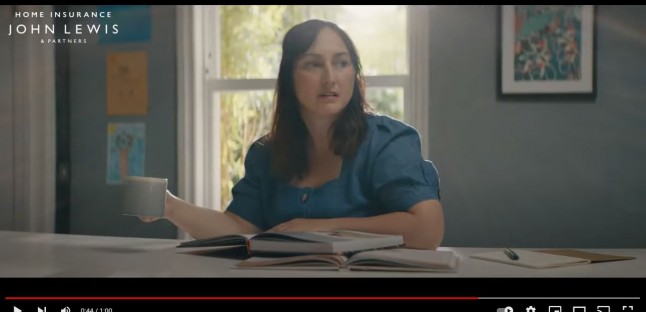Latest posts
A masterclass in creating value
What’s going on at parkrun?
Virtue-signalling all the way to the bank
Bud Light: brand purpose or virtue-signalling?
The Coddling of the American Mind, by Greg Lukianoff and Jonathan Haidt
Belonging, by Owen Eastwood
Such a simple thing
The Long Win, and The Scout Mindset
The Cult of We by Eliot Brown and Maureen Farrell
Coffee and covid modelling
By theme
Marketing strategy
Insight & metrics
Innovation & inspiration
Brand & positioning
Marketing communications
Business purpose
Leadership
By industry sector
Financial services
Retail
FMCG
Technology & start-ups
Consumer services
Business to business
Other sectors
By type
Books
Comment
Quotes
Thought leadership
What went wrong with the new John Lewis home insurance advertisement, withdrawn after three weeks on air following a public outcry? Did the team think they were showing a progressive form of parenting, in which boys can play at being girls or be camp or be anything they like? Brand purpose is a useful concept but this is what it looks like when brands think they are a force for social change, educating us all to be better people. Withdrawing the TV ad plus related other material will have cost the company hundreds of thousands of pounds. Then there’s the reputational damage, which is hard to quantify. This is a costly error, and I’m not even sure it can be classed as accidental damage.
How does this happen? It’s easy to be wise in hindsight. Let’s look at the advertising development process to see where it may have gone off the rails, and where it should have been stopped.
The brief from the client at John Lewis to the ad agency was probably ok. Let’s make another lovely ad like Tiny Dancer (in which no damage occurs).
The agency team worked up ideas, turned them into scripts, pitched them to the client, until they found one they agreed on. At this stage, was it clear that the core idea, the ultimate peace of mind that accidental damage cover gives, was not a core benefit of John Lewis home insurance? That’s ok if it’s going to be made crystal clear it’s an add-on.
My guess is that things first went wrong either at script stage, or in pre-production. They got carried away virtue-signalling. Instead of making an ad focused on the brief, they really went to town on the freedom of self-expression. It’s a bit of a leap from accidental damage cover to the ultimate in enlightened parenting, but that’s where they pitched their tent. Hence the mother idly watching while the boy trashes the place. He’s just expressing himself. The laundry brand Persil has a version of this, in a long-running campaign called Dirt is Good. But it’s tightly bound to the product benefit. Play is healthy and developmental, so let the kids play, knowing Persil will help you wash their clothes clean.
The John Lewis idea was similar, but either at script stage or in the boundary-pushing hands of the director, it wandered way beyond letting a child express themselves. It became a demonstration of wanton destruction of other people’s stuff, held together in a camp display that no nine year old has ever performed without adult direction. Little boys do dress up and act as Mummy but unless Mummy does drag or has a serious problem with alcohol it doesn’t look like this.
Then in post-production, they went full Desmond Is Amazing. Post-production is when the raw material is edited, and the music is chosen. That shot of the boy pouting into the camera was dubious. “Edge of Seventeen” left no room for doubt. At that stage, the clients, or the agency account team, should have been saying, is this a bit too sexualised? Is that really reflecting John Lewis values? Eventually the finished ad was signed off as ready to go on air. That also involves multiple people. Always there is a legal or compliance person, who should have said, this misrepresents the product. That’s the official reason the ad’s been pulled. But not before a lot of classic John Lewis target market, middle England, women complained about how inappropriate it was to show a prepubescent boy like this, and to cast his sister and mother in utterly passive roles while he deliberately harms their stuff. Mumsnetters had plenty to say about this. But mostly, John Lewis, we’re just very disappointed in you.
Latest posts
A masterclass in creating value
What’s going on at parkrun?
Virtue-signalling all the way to the bank
Bud Light: brand purpose or virtue-signalling?
The Coddling of the American Mind, by Greg Lukianoff and Jonathan Haidt
Belonging, by Owen Eastwood
Such a simple thing
The Long Win, and The Scout Mindset
The Cult of We by Eliot Brown and Maureen Farrell
Coffee and covid modelling
By theme
Marketing strategy
Insight & metrics
Innovation & inspiration
Brand & positioning
Marketing communications
Business purpose
Leadership
By industry sector
Financial services
Retail
FMCG
Technology & start-ups
Consumer services
Business to business
Other sectors
By type
Books
Comment
Quotes
Thought leadership
